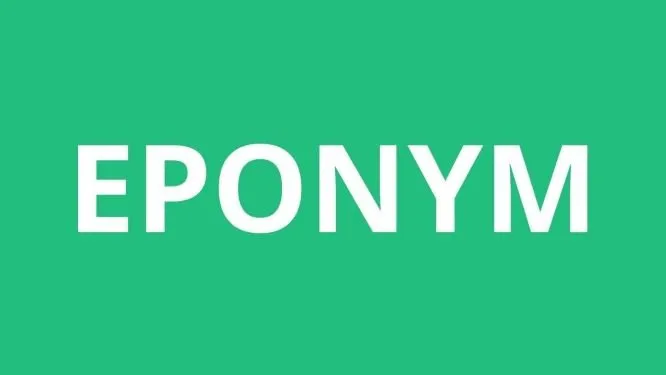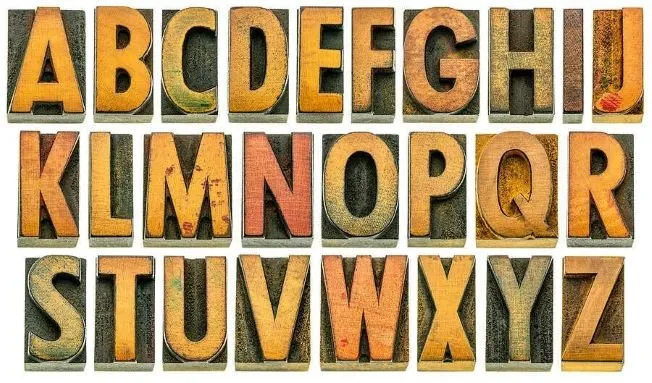
10 Examples of Eponyms in the English Language
What exactly is an eponym? How many of these do we use in everyday speech without even noticing? Explore the most famous eponyms and much more in TheWordPoint's informative blog.

Understanding the origin of the English alphabet is essential as it allows you to understand how many letters are in the English alphabet and why it is so.
The word “alphabet” itself is the compound that came from the Greek language. This characteristic is the perfect embodiment of the origin of the English alphabet and explanation of its essence. Different languages’ elements contributed to shaping English alphabet into the modern commonly accepted standard form that came along since beginning in approximately the 7th century AD till modern 26-letter structure.
Before diving into the ocean of historical facts one needs to clearly understand what alphabet is exactly and what is its main purpose. This system is the set of specific and standard written symbols that correspond to spoken phonemes and allow them to form words and sentences, eventually contributing to the need for human translation services as every language has its own alphabet.
The numbers of letters also differ from language to language since it may be equal to either 13 letters as in Hawaiian Braille alphabet or 58 as in Hindi alphabet. The English language has 26 letters in the alphabet that represent vowels and consonants.
There was a time when inhabitants of the British Isles used the runic alphabet called futhorc. It was brought to these lands by Germanic tribes who conquered and mostly assimilated locals. Those tribes are now known as Anglo-Saxons and they also utilized many features that remained in medieval Britain since the Roman rule that ended in the 5th century AD.
Using both Anglo-Saxon runes and Latin script for some time and subsequently replacing runes by Roman letters with mutual influence of both writing systems resulted in development of the Old English alphabet that has written records confirming its elements’ order dating back to the 11th century AD. 24 letters in this alphabet came from Latin one while 5 English letters and their combinations as the result of runic alphabet’s influence remained valid. Some borrowed runic letters such as thorn (þ) or wynn (ƿ) were replaced by digraphs that are not included as separate letters or turned into specific ones that did not exist before, such as “th” and “w” sounds respectively. Letter combinations such as (æ) and (œ) were also included in the alphabet.
Read also: Where to find accurate Latin translation services?
This period in English alphabet’s development history begun after Norman invasion in 1066 AD and subsequent use of Middle English during the next two centuries. Starting of Modern English form of language development is usually associated with the 14th century AD. Many Old English letters became obsolete during these stages or turned into different letters, as happened with thorn (þ) being replaced by digraph th, which is not the part of alphabet though, or wynn (ƿ) that eventually became modern independent letter w. Distinguishing j from i and u from v begun during the 16th century, at the beginning of the Modern English period. When you hire translation experts in a reputable academic translation agency, they do know all those changes and relevant background so that completed texts are as accurate as humanly possible.
An impressive list of English dialects represents almost every part of the world so that English alphabet is used not only in Standard English, also known as Received Pronunciation and which is used when you need certified legal translation services, but in multiple variations of this language as well. The major forms of English native dialects are North American English, Canadian English, and Australian English. Many countries that experienced strong influence from Great Britain or the United States’ side developed specific and somewhat unique dialects, such as Indian English, Hiberno-English dialects, or Philippine English. Usually, the differences are observed not in the number of letters in the alphabet but on pronunciation level as well as vocabulary and grammar.
Modern world is perfectly aware of what are the 26 letters of the alphabet since English has become the primary global language and the one that is associated with globalization-related technologies. The majority of English language learners are not particularly interested in knowing who invented the alphabet or what is the history behind every letter.
It is important to remember that British alphabet does not include digraphs that are widely used in the language such as ch, th, gh, wh, zh, and others.
Read also: Features all accurate certified Arabic translation services should offer.
Apart from developing one’s memory and learning skills, studying history of alphabet’s development gives deeper knowledge about the world around us since every letter is the result of cultural influence and complex historical processes. Professional translators achieve outstanding results in their work because they are aware of all this information. Learning a language without understanding other languages’ influences is incomplete and prevents one from reaching the level of native speaker’s knowledge. While majority of people may ignore this requirement, language experts could not do that.

What exactly is an eponym? How many of these do we use in everyday speech without even noticing? Explore the most famous eponyms and much more in TheWordPoint's informative blog.

There are several languages that have been created from movies or works of literature. There’s Klingon from the Star Trek franchise. The movie Avatar brought us Na’vi. There’s also Dothraki from Game of Thrones. Let’s not forget Elvish, Nadsat, and Lapine.

What Declaration of Independence means to American citizens and how it was translated into foreign language. Learn some interesting facts.
Your personal account was created successfully. Login details were sent to your email.
Thank you for choosing our service!
You have registered your account successfully!
Your application was sent to our
HR Departament.
Get prepared to pass several proficiency tests to prove your skills as we hire only the best experts to deliver the best quality to our Clients. We will contact you soon for futher instructions